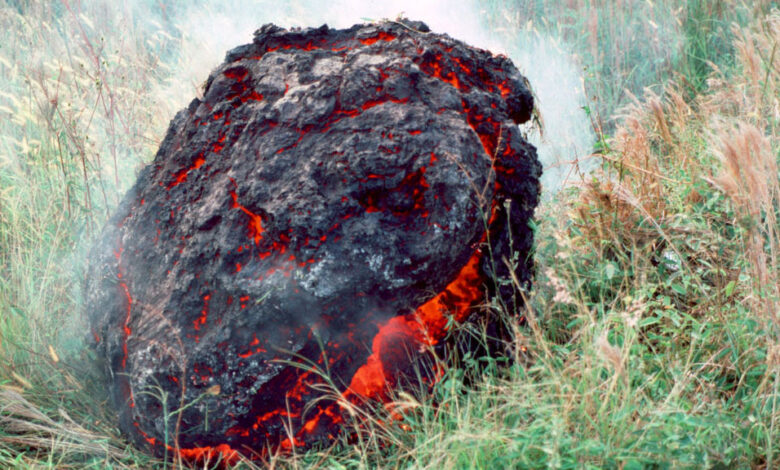Scientists Say: Lava bomb


angle: The space (usually measured in degrees) between two intersecting lines or surfaces at or close to the point where they meet.
ash: (in geology) Small, lightweight fragments of rock and glass spewed by volcanic eruptions.
atmosphere: The envelope of gases surrounding Earth, another planet or a moon.
core: Something — usually round-shaped — in the center of an object. (in geology) Earth’s innermost layer. Or, a long, tube-like sample drilled down into ice, soil or rock. Cores allow scientists to examine layers of sediment, dissolved chemicals, rock and fossils to see how the environment at one location changed through hundreds to thousands of years or more.
crust: (in geology) Earth’s outermost surface, usually made from dense, solid rock (in planetary science) the outermost surface of rocky planets, dwarf planets and natural satellites.
crystal: (adj. crystalline) A solid consisting of a symmetrical, ordered, three-dimensional arrangement of atoms or molecules. It’s the organized structure taken by most minerals. Apatite, for example, forms six-sided crystals. The crystalline components of a rock are usually too small to be seen with the unaided eye.
debris: Scattered fragments, typically of trash or of something that has been destroyed. Space debris, for instance, includes the wreckage of defunct satellites and spacecraft.
eruption: (in geoscience) The sudden bursting or spraying of hot material from deep inside a planet or moon and out through its surface. Volcanic eruptions on Earth usually send hot lava, hot gases or ash into the air and across surrounding land. In colder parts of the solar system, eruptions often involve liquid water spraying out through cracks in an icy crust. This happens on Enceladus, a moon of Saturn that is covered in ice.
lava: Molten rock that comes up from the mantle, through Earth’s crust, and out of a volcano.
lava bomb: The popular term for a clump of molten rock hat can be explosively flung out of a pool of lava at the top of a volcano. It usually occurs when a gas bubble bursts at the pool’s surface. Extremely dangerous, it can melt through metal.
magma: The molten rock that resides under Earth’s crust. When it erupts from a volcano, this material is referred to as lava.
molten: A word describing something that is melted, such as the liquid rock that makes up lava.
solid: Firm and stable in shape; not liquid or gaseous.
volcano: A place on Earth’s crust that opens, allowing magma and gases to spew out from underground reservoirs of molten material. The magma rises through a system of pipes or channels, sometimes spending time in chambers where it bubbles with gas and undergoes chemical transformations. This plumbing system can become more complex over time. This can result in a change, over time, to the chemical composition of the lava as well. The surface around a volcano’s opening can grow into a mound or cone shape as successive eruptions send more lava onto the surface, where it cools into hard rock.



